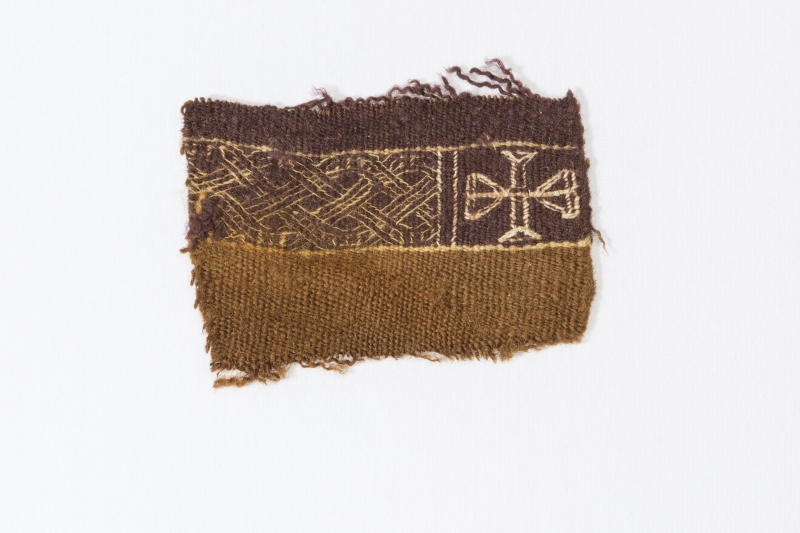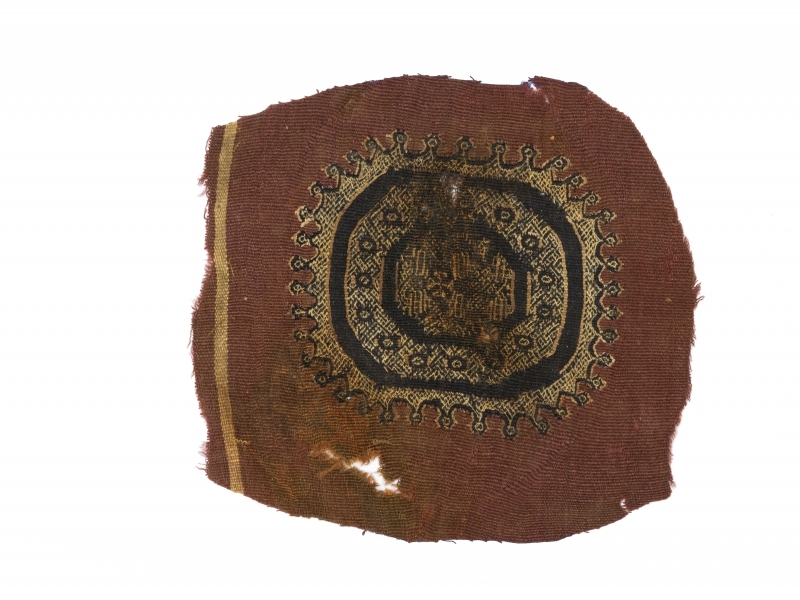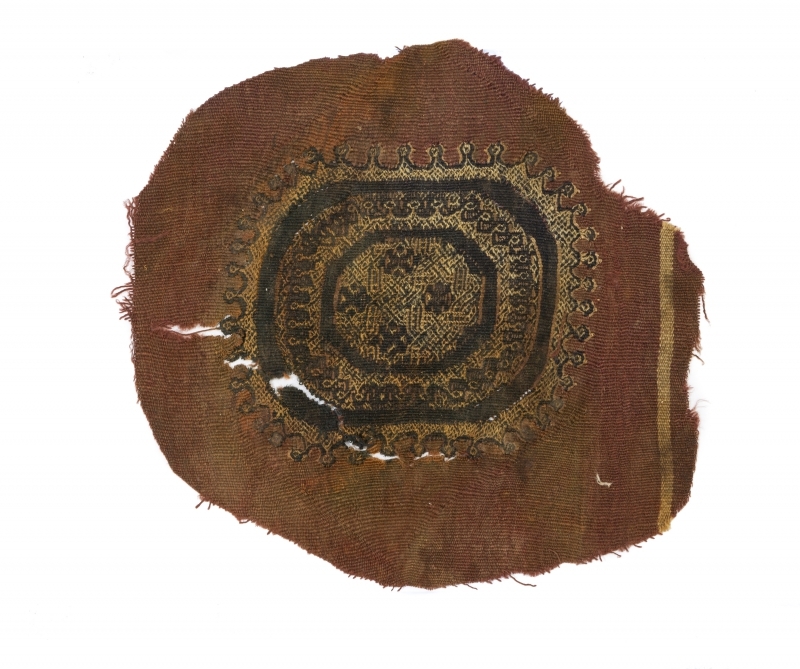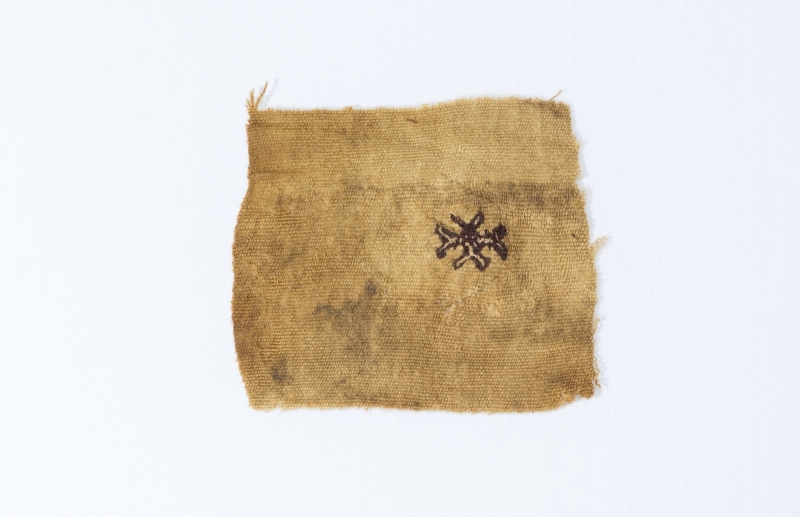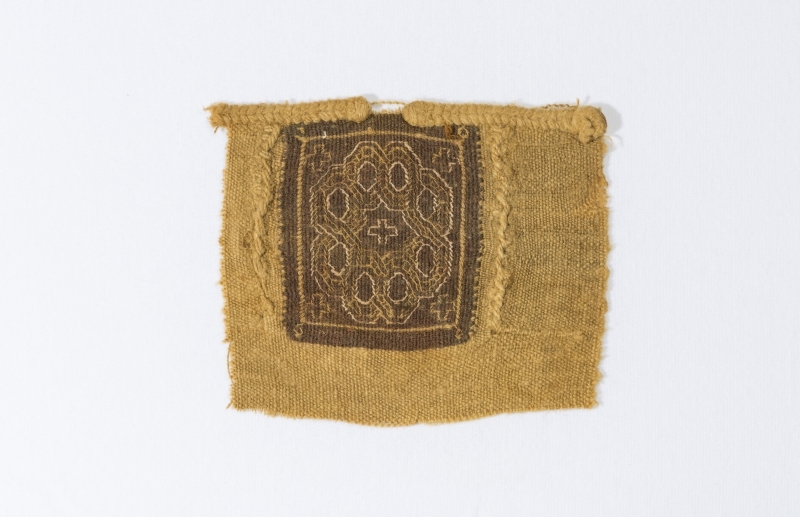Christian Iconography
The textiles in this exhibition are all dated between the 3rd and 9th century CE. This period saw the rise and decline of Christianity in North Africa, so it is understandable that many textile fragments feature Christian iconography. Early scholars in these textiles identified Christian images and began referring to all North African textile fragments as Coptic textiles. “Coptic” refers to the Copts, a sect of Christians based largely out of Egypt that has persisted to the modern day. Derived from the Greek “Aigyptios,” the word originally referred dually to the region of Egypt and its inhabitants. After the Arab conquest of Egypt in the middle of the 7th century CE, the term was used to differentiate Egyptian Christians from other demographics. Over time, “Copt” and “Coptic” came to reference a particular sect of Christianity that exists alongside other Christian groups within Egypt and beyond its borders.
The complicated meaning of “Coptic” makes it a bad descriptor for textile fragments like those in this exhibition. Even at the height of Christianity in Egypt, it would be a vast oversight to imply that all textiles produced in the region were made by or for a Christian, let alone a Christian who would now be identified as Coptic. In addition, although most textile fragments do in fact come from excavations in Egypt, some come from surrounding regions that would otherwise be ignored by the term “Coptic.” Even fragments that feature iconography that is clearly Christian are difficult to classify as “Coptic,” as the lack of archaeological context that plagues these fragments makes locating them in Egypt in an area known to be predominantly Coptic all but impossible.
The two most common Christian images in these textile fragments are depictions of saints and crosses. The textile fragments from the Arthur M. Sackler Foundation donation feature no saints, but several feature crosses. Figures 1 and 2 feature a cross with four triangular feet, two of which are larger than the other two. Figure 2, along with Figure 3, which likely came from the same textile, was most likely a decorative roundel from a tunic. These types of roundels likely came from either the shoulder of waist of the garment, where they would have been located parallel from each other on the wearer’s front. The cross in Figure 2 is rather small and appears close to the center of the roundel. The other roundel does not have the same cross, which is abnormal. Both roundels are dark red and fully dyed, indicating that the textiles would have been fairly expensive and would have been owned by a wealthy individual. Figure 1 is died dark purple, which is another color that would have been expensive to use. The crosses in Figures 1, 2, and 3 are all accompanied by knot patterns, which served as a protective symbol, especially when accompanied by a cross.
Figure 4 features a forked cross. The textile from which this simple fragment comes is particularly difficult to determine, as a forked cross could appear on any sort of garment or furnishing textile.
Figure 5 features a Greek cross surrounded by an interlacing pattern that forms eight circles. As in Figures 1, 2, and 3, this knot pattern would have served as a protective symbol. The Greek cross is a very old version of the cross, appearing commonly in Christian iconography by the 4th century CE. Figure 5 also features a strange hem at the top of the fragment that splits at the top center of the motif.
REFERENCES
Bagnall, Roger S. Egypt in Late Antiquity. New Jersey: Princeton University Press, 1993.
Capponi, Livia. Roman Egypt. London: Bristol Classical Press, 2011.
Kybalová, Ludmila. Coptic Textiles. Translated by Till Gottheiner. London: Drury House, 1967.
Maguire, Eunice Dauterman, Maguire, Henry P., and Duncan-Flowers, Maggie J. Art and Holy Powers in the Early Christian House. Urbana and Chicago: University of Illinois Press, 1989.
Rutschow, Marie-Hélène. Coptic Fabrics. Translated by Adam Stephenson, Susan Ashcroft, Victoria Erbin, Patricia Kessler, and Thomas Kessler. Paris: Editions Adam Biro, 1990.
Thomas, Thelma K. Designing Identity: The Power of Textiles in Late Antiquity. Princeton and Oxford: Princeton University Press, 2016.
